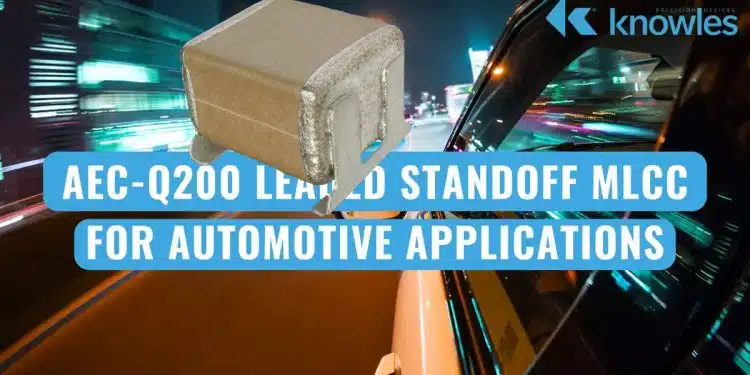To help PCBs and other physically connected components survive vibration, board bending, thermal mismatching, and stress during thermal cycling, Knowles Precision Devices has launched a range of leaded standoff components, Metal Frame J-Lead Terminal MLCCs, that are qualified to AEC-Q200.
AEC-Q200 is the global standard for stress resistance in passive electronic components in automotive applications.
Knowles Metal Frame J-Lead Terminal MLCC ceramic capacitors offer enhanced performance under critical testing conditions, including thermal shock and mechanical vibrations.
These high-reliability parts are capable of 3,000 thermal cycles with no degradation of interconnects when mounted on an FR4 board. Compared to a surface-mounted chip, lead flexibility accommodates much more board bending and flexing before internal cracks form.
In arrangements with many components clustered on a board, leaded standoffs are advantageous because they position ceramic elements off the board, ultimately providing more design flexibility. With high voltage ratings, standoffs can help control flashover across the component surface as well.
Features
- Options for case sizes 2220 and 2225 in all ranges
- Enhanced performance under critical testing conditions such as thermal shock and mechanical vibration
- “J” type leads with a double tabbed connection to MLCC terminals
- Voltage ratings up to 6kV
- 3kV and 4kV options to satisfy the demands of DWV testing for 800V battery systems
- Suitable for industrial and automotive markets
Applications
- Battery Management
- EV and HEV
- Applications Requiring High Voltage Performance Where Stability Under Temperature and Voltage is Critical
- DC-DC Converters
- Wireless Charging Resonant Tank
- PTC Heater Controller































